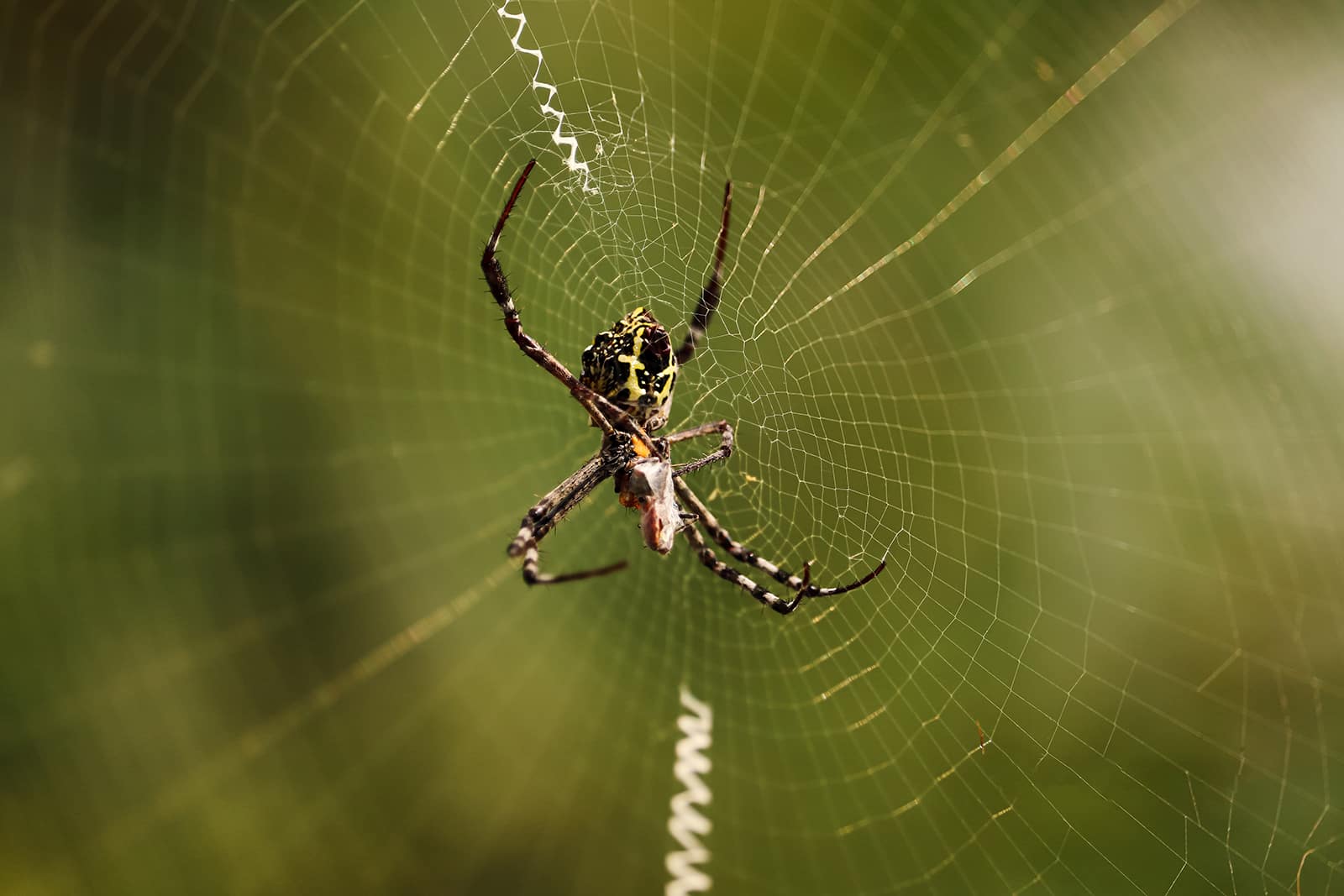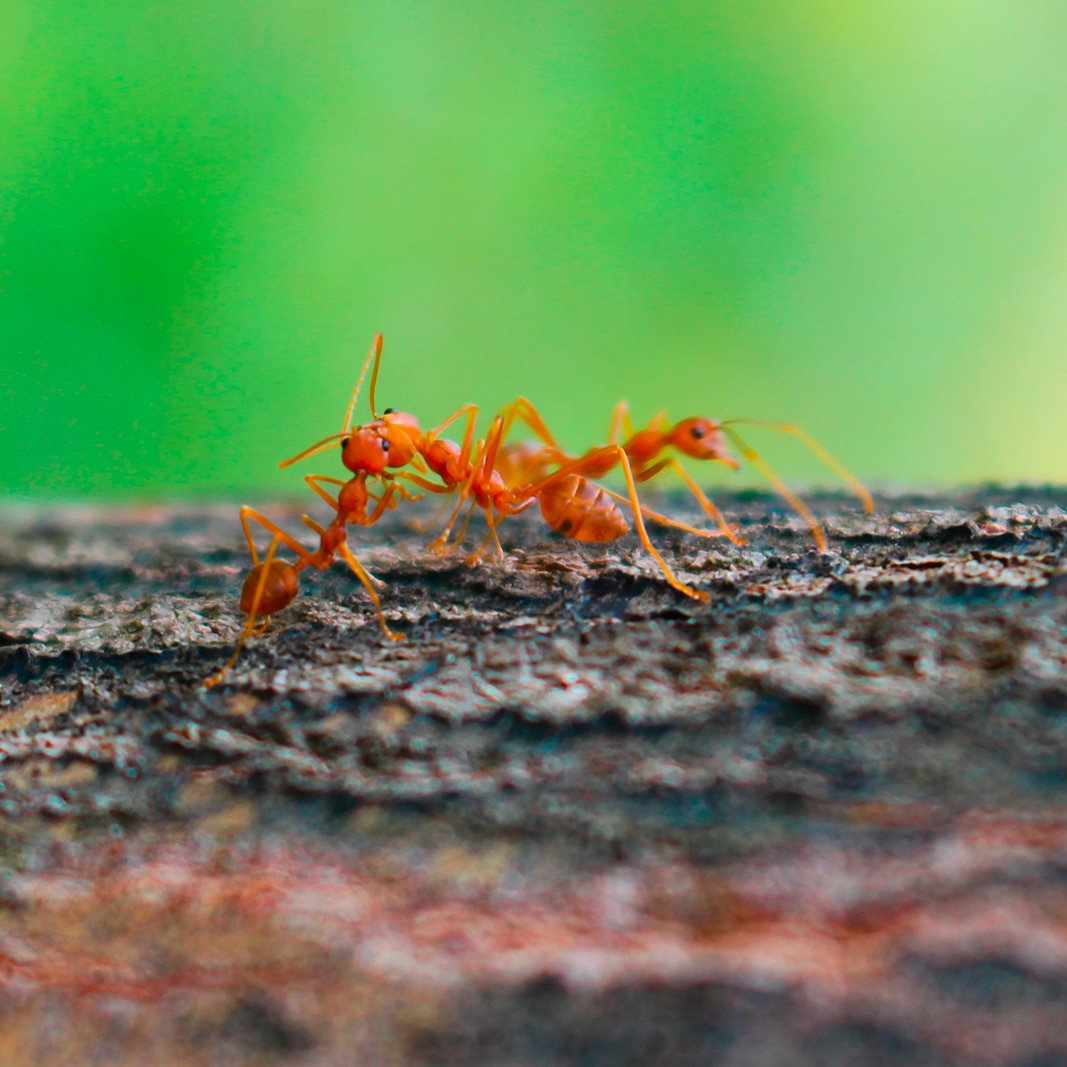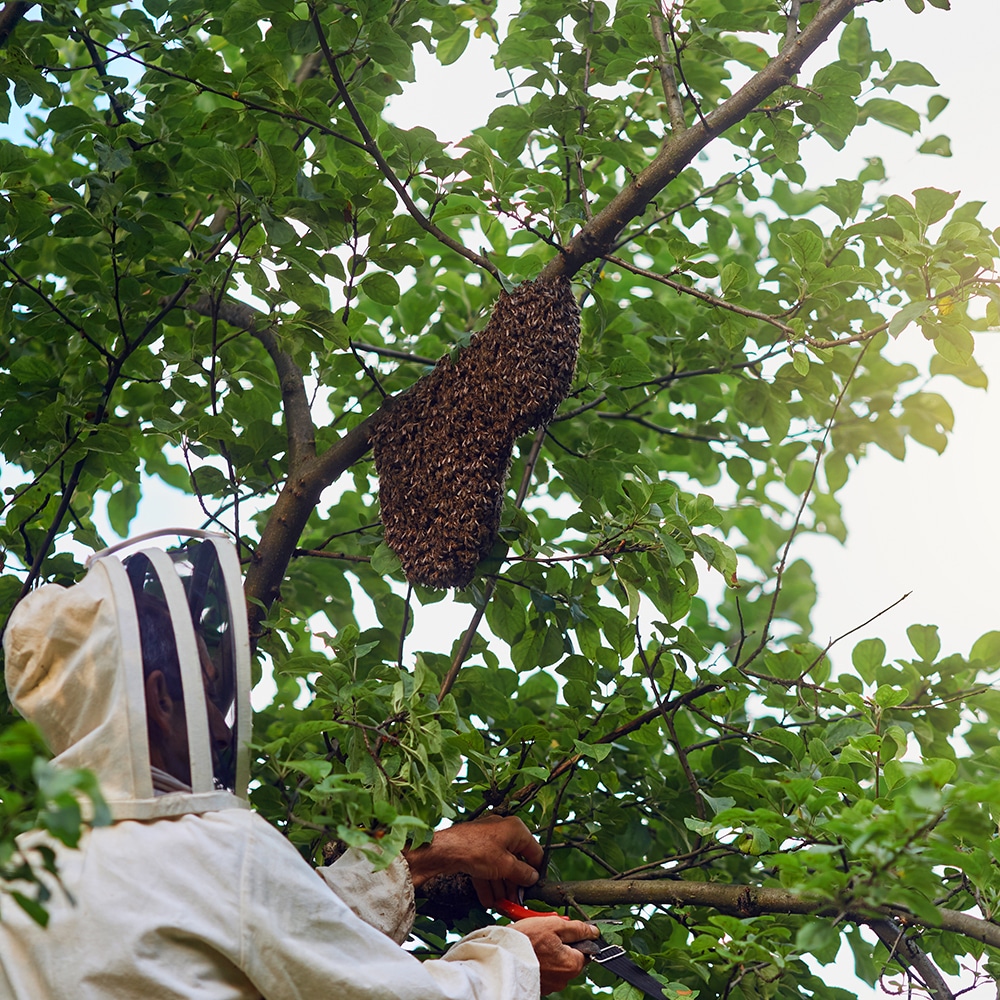
Why Do Spiders Come Back And Why
Why Do Spiders Come Back And Why On The Central Coast NSW. Responsive Proactive Solutions. Detail-focused for lasting results. Call Adam on 0431 222 894
Ant infestations can be a real headache, but there’s a way to tackle them before they start. At Vital Pest Control, we believe in prevention as the ultimate strategy. Let’s dive into how you can keep those ants at bay effectively.
Why Prevention is Key to Ant Control
Preventing ants is easier than eliminating them. It saves time and stress. Avoid costly repairs with proactive measures. Consistent prevention ensures reliable and trustworthy results.
How to Seal Entry Points to Keep Ants Out
Inspect your home for cracks and gaps. Use caulk or weather stripping to seal them. Focus on windows, doors, and foundations. This fast and responsive method keeps ants out.
How to Store Food Properly to Avoid Ants
Keep food in airtight containers. Avoid leaving crumbs or spills around. Store fruits and sweets out of reach. This practice maintains quality over quantity in pest control.
The Role of Cleanliness in Ant Prevention
Regular cleaning removes food sources for ants. Vacuum floors and wipe surfaces often. A tidy home is less inviting to pests. Cleanliness is a simple yet effective deterrent.
Why Outdoor Landscaping Affects Ant Activity
Trim plants and trees that touch your home. Remove debris and leaf litter. These actions reduce ant habitats. Proper landscaping prevents infestations and keeps your space neat.
How to Identify Ant Trails Early
Look for visible trails along walls and floors. Check for ants near food sources. Early detection helps stop infestations. Spotting trails early leads to fast and responsive action.
The Best Deterrents for Keeping Ants Away
Use natural repellents like vinegar or lemon juice. Ant baits and barriers are effective too. Choose solutions that fit your needs. These deterrents offer quality over quantity in pest control.
Common Mistakes That Attract Ants
Leaving food out and ignoring spills invites ants. Avoiding regular cleaning is another mistake. Be vigilant in your habits. Correcting these errors keeps your home ant-free.
Discover how we can help you today! Visit our Contact page to learn more.

Ant infestations can disrupt homes and businesses across Central Coast NSW. Prevention plays a crucial role in ant control, especially when dealing with persistent colonies. By focusing on proactive measures, Vital Pest Control can help protect properties from these invasive insects.
Understanding Ant Behaviour
Ants are social creatures, drawn to food and water sources. They leave pheromone trails, guiding others to these spots. Knowing their habits helps in preventing infestations. By removing potential attractants, property owners can reduce the chances of ants setting up camp.
Sealing Entry Points
Ants often enter through small cracks and crevices. Sealing these entry points is an effective method to prevent their invasion. Regularly inspecting and repairing gaps in windows, doors, and walls can stop ants from gaining access to indoor spaces.
Maintaining Cleanliness
Cleanliness is key in ant prevention. Regularly cleaning kitchens, pantries, and dining areas removes food particles that attract ants. Storing food in airtight containers and promptly clearing spills can deter ants from foraging indoors.
Professional Pest Control
Sometimes, professional intervention is necessary. Vital Pest Control offers tailored solutions to prevent and manage ant infestations. Their expertise ensures a comprehensive approach, safeguarding properties across Central Coast NSW from persistent ant problems.
Ant infestations can be a nuisance, especially during the warmer months on the Central Coast of NSW. Keeping these persistent pests at bay involves more than just removing food sources; it also requires sealing off entry points in your home. By effectively blocking these access routes, you can prevent ants from entering and causing havoc.
Inspect Common Entry Points
Begin by inspecting your home for common entry points. Ants often enter through cracks in walls, gaps in windows, or under doors. Pay special attention to areas near the kitchen or pantry. Use a flashlight to spot tiny gaps or openings that might go unnoticed. Identifying these entryways is the first step in your ant-proofing mission.
Seal Cracks and Gaps
Once you’ve identified the entry points, it’s time to seal them. Use silicone caulk for small cracks and gaps. It’s durable and provides an effective barrier. For larger gaps, consider using expanding foam or weatherstripping. These materials not only block ants but also improve your home’s insulation.
Maintain Doors and Windows
Doors and windows are common entry points for ants. Ensure that door sweeps and window seals are intact. Replace any worn-out weatherstripping. By maintaining these areas, you not only keep ants out but also increase energy efficiency. Regular checks and maintenance can prevent future infestations.
Storing food properly is crucial to keeping ants at bay in your home on the Central Coast, NSW. Ants are relentless in their search for food, and even the smallest crumbs can invite an infestation. By managing how and where you store food, you can significantly reduce the risk of these persistent pests invading your space.
Keep Food Sealed
Ensure all food items are stored in airtight containers. Ants can detect even the slightest scent of food, so using containers with tight-fitting lids will help block their path. Glass or hard plastic options are ideal as they are durable and prevent any scent leakage. This simple step can deter ants from entering your pantry or cupboards.
Clean Spills Immediately
Spills and crumbs can attract ants quickly. Wipe down counters and floors immediately after food preparation or meals. Use a mild detergent to ensure no residue is left behind. Regularly clean under kitchen appliances and in hard-to-reach corners where crumbs might accumulate unnoticed. Consistent cleaning habits help maintain a pest-free environment.
Store Produce Carefully
Fresh fruits and vegetables should be stored in the fridge or in mesh bags. This prevents the sweet aroma from attracting ants. If you prefer keeping certain produce at room temperature, like bananas or avocados, inspect them regularly and dispose of any overripe items promptly. Proper produce management can deter ants from lingering around your kitchen.
Maintaining a clean environment is crucial in preventing ant infestations, especially along the Central Coast of NSW. Ants are constantly on the hunt for food, water, and shelter, making cleanliness a key factor in keeping them at bay. By understanding their behaviour and implementing effective cleaning practices, you can significantly reduce the chances of an ant invasion.
Eliminate Food Sources
Ants are drawn to food scraps and spills. Regularly wiping down countertops and sweeping floors can remove these tempting morsels. Seal food in airtight containers and store them in cupboards. This simple habit can deter ants from entering your home in search of a meal.
Address Moisture Issues
Ants need water to survive. Leaky taps and damp areas around your home can attract them. Fix any plumbing leaks promptly and ensure areas like bathrooms and kitchens are well-ventilated. Keeping these spaces dry can make them less appealing to ants.
Regularly Dispose of Rubbish
Rubbish bins can be a goldmine for ants. Empty bins often and use liners to contain any spills. Make sure bins have tight-fitting lids to prevent ants from accessing the contents. This not only keeps ants away but also maintains a hygienic living space.
Outdoor landscaping plays a crucial role in ant activity on the Central Coast of NSW. Ants are attracted to certain environmental conditions that landscaping can either enhance or deter. Understanding how your garden design influences these conditions can help in preventing ant infestations before they start.
Moisture Levels
Ants are drawn to moist areas, making garden features like ponds or improperly drained sections attractive. Ensuring your landscaping has proper drainage can prevent water accumulation, reducing the appeal for ants. Incorporate gravel paths or sloped areas to direct water away, minimising the risk of attracting these persistent pests.
Plant Selection
Choosing plants wisely can significantly impact ant activity. Some plants, like peonies, release nectar that attracts ants. Opt for native plants that require less water and are less likely to produce ant-attracting substances. This choice not only keeps your landscape beautiful but also less inviting to ants.
Mulch and Ground Cover
While mulch helps retain soil moisture and improve aesthetics, it can also provide a perfect habitat for ants. Use mulch sparingly and keep it away from the base of your home. Consider using stones or synthetic ground covers as alternatives to traditional organic mulch to deter ant colonies.
Ant trails can become a major problem if not identified early, especially on the Central Coast NSW. Spotting these trails early is crucial for effective pest control and to prevent infestations. Understanding the signs can save homeowners both time and money.
Look for Pheromone Trails
Ants communicate by leaving pheromone trails, which guide their colony to food sources. These trails are not always visible to the naked eye but can often be detected by observing patterns of ant movement. Keep an eye out for lines of ants moving in a consistent path, especially around kitchen counters or outdoor patios.
Check Near Food Sources
Ants are drawn to food, particularly sugary and greasy substances. Early morning or late afternoon are prime times to inspect areas like kitchens or storerooms. Look for ants moving in and out of these areas. Their presence often indicates a nearby trail leading back to their nest.
Inspect Hidden Areas
Ant trails often start in hidden or hard-to-reach places like behind appliances, under sinks, or along baseboards. Regularly check these areas for signs of ant activity. Finding even a few ants in these spots can suggest a trail is forming or already established.
Ants can be more than a nuisance. They can invade homes, searching for food and shelter. On the Central Coast NSW, keeping them at bay is essential. Vital Pest Control offers top solutions to deter these pests before they become a problem.
Natural Repellents
Ants hate certain smells. Using natural deterrents can be both effective and eco-friendly. Citrus peels and vinegar disrupt their scent trails, stopping them from finding their way into your space. Sprinkle cinnamon or coffee grounds near entry points for an extra barrier. These simple household items can make a significant difference.
Barrier Methods
Creating physical barriers helps prevent ants from entering. Seal cracks and crevices around windows and doors. Silicone caulk is excellent for plugging gaps. For outdoor protection, diatomaceous earth sprinkled around the perimeter acts as a barrier ants won’t cross. It’s a passive yet powerful technique to keep them outside.
Professional Solutions
Sometimes, professional intervention is needed. Vital Pest Control provides targeted treatments designed for the Central Coast environment. Their expert team uses advanced methods to manage ant populations effectively. Regular inspections and treatments create a long-term defence against infestations, ensuring peace of mind.
Ants can become pesky invaders in homes, particularly on the Central Coast of NSW. Understanding the common mistakes that lure these insects inside can help maintain a pest-free environment. By addressing these errors, homeowners can take proactive steps to prevent ant infestations before they start.
Leaving Food Out
Ants are always on the hunt for food, and leaving crumbs or uncovered snacks on countertops is an open invitation. Ensure that all food is stored in airtight containers. Regularly clean surfaces to remove any remnants that might attract ants. Even pet food left out overnight can be a feast for these tiny invaders.
Ignoring Spills and Crumbs
Small spills and crumbs are often overlooked, but they can be a beacon for ants. Promptly addressing spills and regularly vacuuming or sweeping can deter ants from entering. Pay extra attention to hidden spots under appliances and furniture where food particles may accumulate unnoticed.
Neglecting to Seal Entry Points
Gaps around windows, doors, and foundations provide easy access for ants. Regularly inspect your home for these entry points and seal them with caulk or weather strips. This small step can significantly reduce the chances of an ant invasion, as it limits their access to the indoors.
Ultrasonic ant repellents have gained popularity as a potential solution to ant infestations, but their effectiveness remains a topic of debate. These devices emit high-frequency sound waves intended to deter ants and other pests. For residents of the Central Coast NSW, understanding if these gadgets are worth the investment is crucial for effective pest control.
Understanding Ultrasonic Technology
The concept behind ultrasonic ant repellents revolves around sound waves that are inaudible to humans but disruptive to ants. The theory is that these waves create an uncomfortable environment, causing ants to vacate the premises. However, scientific studies show mixed results, leaving some to question their reliability. Many users report varying degrees of success, suggesting that these repellents might only work under specific conditions.
The Impact in Different Ant Species
Ant species differ in their response to ultrasonic frequencies. While some may find the waves unsettling, others may not react at all. The effectiveness can depend on factors such as the ant’s habitat and behavioural patterns. This variability means the repellent might deter some ant types while leaving others unaffected, necessitating a more targeted approach in pest control strategies.
Integrating with Other Pest Control Methods
Relying solely on ultrasonic repellents may not guarantee complete ant eradication. For those on the Central Coast, combining these devices with traditional pest control methods, like sealing entry points and removing food sources, is advisable. This integrated approach can enhance overall effectiveness and provide a more comprehensive solution to preventing ant infestations.
Ants can be a nuisance, especially when they invade your outdoor spaces. On the Central Coast of NSW, keeping these pests at bay requires effective control methods. Vital Pest Control offers several strategies to tackle ant problems before they escalate.
Natural Deterrents
Using natural deterrents is a great first step in managing outdoor ants. Sprinkle diatomaceous earth around entry points and garden beds. This natural powder dehydrates ants, deterring them from crossing treated areas. Another option is planting mint or lavender around your garden, as their scents naturally repel ants. Frequent application ensures ants steer clear of your property.
Baiting Strategies
Baiting is an effective method to target entire ant colonies. Place ant baits near trails and nests. These baits lure workers who carry the poison back to their nests, ultimately eliminating the colony. Ensure baits are suitable for outdoor use and regularly check and replace them for ongoing protection.
Barrier Sprays
Barrier sprays provide a chemical solution for more persistent ant issues. Apply these sprays around the perimeter of your home and garden. They create an invisible barrier that stops ants from entering treated areas. Follow the manufacturer’s instructions carefully to ensure safe application and effective results.
With these methods, Vital Pest Control helps keep your Central Coast property ant-free, ensuring a more pleasant outdoor experience.
Ant infestations can be a common headache for homeowners, and some properties seem to attract these pests more than others. Understanding why certain homes on the Central Coast NSW are more prone to ants can help in crafting effective prevention strategies. Let’s delve into the factors that make a home particularly enticing to these little invaders.
Access to Food Sources
Homes that frequently have food crumbs or spills on kitchen floors and counters become a beacon for ants. Even small traces of food can draw them in. Proper food storage and regular cleaning can significantly reduce the attraction for ants. Keeping pet food sealed and disposing of rubbish promptly also helps.
Moisture and Water Leaks
Ants are attracted to moisture, so homes with water leaks or high humidity levels are more susceptible. Bathrooms, kitchens, and basements where leaks might occur provide the ideal environment for ants to thrive. Fixing these leaks and using dehumidifiers can deter their presence.
Entry Points and Shelter
Cracks in walls, gaps under doors, and poorly sealed windows create entry points for ants. These tiny openings offer easy access to the warmth and shelter ants seek. Sealing gaps and using weather stripping can prevent ants from entering. Regular inspections can help identify and rectify these vulnerabilities.
Weather plays a crucial role in ant infestations, especially on the Central Coast of NSW. Changes in temperature and humidity often drive ants to seek shelter in homes, creating unwelcome problems for residents. Understanding how weather influences ant behaviour can help in taking preventive measures to avoid infestations.
Temperature Changes
As temperatures rise, ants become more active, searching for food and water. During hot spells, ants may invade homes in search of moisture, especially in kitchens and bathrooms. Conversely, cooler temperatures can drive ants inside for warmth. Homeowners should seal entry points to prevent ants from accessing the indoors during these periods.
Humidity and Rainfall
Humidity and rainfall significantly impact ant behaviour. Wet weather often floods ant nests, prompting them to relocate to drier areas like homes. High humidity levels also drive ants indoors to escape damp conditions. Ensuring proper drainage and reducing moisture in and around your home can deter ants from seeking refuge inside.
Seasonal Transitions
Seasonal changes can trigger increased ant activity. Transition periods, such as spring to summer, encourage ants to expand their colonies. During these times, ants forage for food to support growing populations. Regular inspections and maintaining cleanliness can help prevent infestations during these busy seasons.
Ants are resourceful creatures, often finding their way into homes in search of food, water, or shelter. If your neighbour has an ant problem, it’s possible these tiny invaders might venture into your home too. Understanding how ants spread can help you prevent an infestation before it starts.
Ants’ Mobility and Range
Ants are known for their ability to travel long distances relative to their size. They use pheromone trails to guide others from their colony to food sources. If your neighbour has an infestation, these trails can lead ants to your property. Ants can enter through the smallest cracks and crevices, making it crucial to seal potential entry points around your home.
Shared Resources and Habitats
Ants are attracted to food and water, which are abundant in residential areas. Shared fences, gardens, or even pet food left outdoors can become communal resources for ants. This shared environment increases the likelihood of ants spreading from one house to another. Keeping your yard tidy and removing potential food sources can deter ants from setting up camp.
Effective Prevention Strategies
Regularly inspecting your home for signs of ants can help you catch an infestation early. Use natural deterrents like vinegar or essential oils along entry points. Professional pest control services can provide treatments tailored to your specific situation, ensuring ants are kept at bay. Staying proactive is key to preventing these pests from making your home theirs.
After treating your home for ants with Vital Pest Control on the Central Coast NSW, you might wonder how to prevent them from coming back. Ensuring these tiny invaders stay away involves more than just the initial treatment. Here are some practical tips to keep your home ant-free.
Seal Entry Points
Ants often enter through tiny cracks and openings. Inspect your home carefully and seal any gaps around windows, doors, and foundations. Use caulk or weather stripping to block these entry points, reducing the chances of ants finding their way back inside.
Maintain Cleanliness
Ants are attracted to food remnants. Clean your kitchen and dining areas regularly, wiping down surfaces and sweeping floors. Store food in airtight containers and ensure rubbish bins are covered. These steps can make your home less inviting to ants.
Eliminate Moisture
Ants seek out water sources, so fix any leaks in taps or pipes. Ensure your home is well-ventilated to avoid dampness. Reduce moisture around your property to make it less appealing to ants looking for a drink.
Regular Monitoring
Keep an eye out for any signs of ant activity. Regularly inspect common areas where ants might enter or gather. Quick detection allows you to address any issues before they become a major problem.
Ant invasions are more than just a nuisance; they can cause damage and health issues. On the Central Coast NSW, professional inspections play a crucial role in keeping these pests at bay. Vital Pest Control offers expert services to ensure homes remain ant-free. Regular check-ups can detect early signs of an infestation, helping to prevent a small problem from turning into a significant issue.
Early Detection of Ant Colonies
Professional inspections are key to spotting ant colonies before they become noticeable. Ants often build nests in hidden areas, making it challenging for homeowners to identify them. Experts from Vital Pest Control know where to look and can identify signs of ant activity that might be missed by the untrained eye. Catching these early means treatment can be more targeted and effective.
Targeted Treatment Plans
Once ants are detected, professionals can design a targeted treatment plan tailored to the specific ant species and the property layout. Different ants require different approaches, and a one-size-fits-all method rarely works. Vital Pest Control’s expertise ensures the use of the right products and strategies, effectively eliminating the ant threat.
Preventative Measures and Advice
Beyond treating existing problems, professionals offer invaluable advice on preventative measures. They can identify potential entry points and suggest modifications to reduce the risk of future infestations. Regular professional inspections keep homeowners informed and prepared, significantly lowering the chances of an infestation.
Please leave your details in the form and we will call you back the same day.
So that we can process your enquire efficiently please leave as many details as possible and upload any relevant images. (.jpg and .png format)

Why Do Spiders Come Back And Why On The Central Coast NSW. Responsive Proactive Solutions. Detail-focused for lasting results. Call Adam on 0431 222 894

Building a Long Term Residential Pest Protection Plan For Home Owners On The Central Coast NSW. Responsive Proactive Solutions. Detail-focused for lasting results. Call Adam on 0431 222 894

How to Protect Your Home from Wasp Infestations On The Central Coast NSW. Responsive Proactive Solutions. Detail-focused for lasting results. Call Adam on 0431 222 894